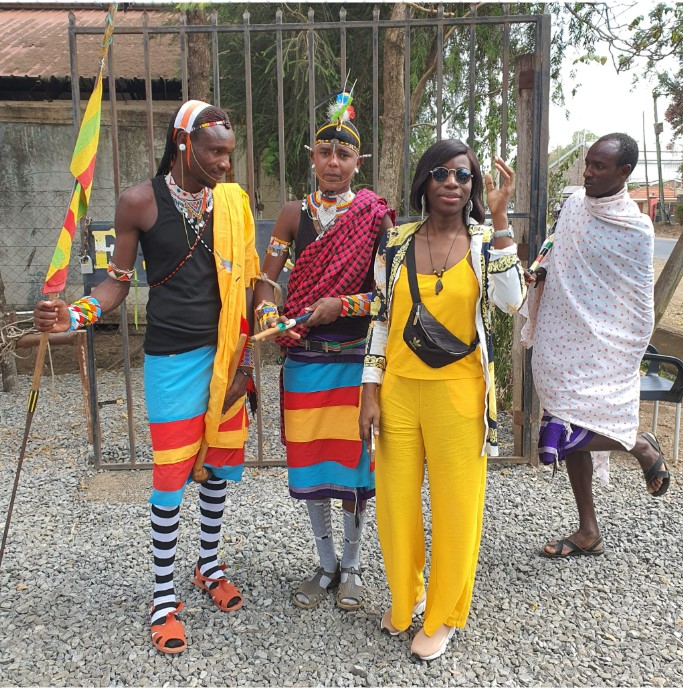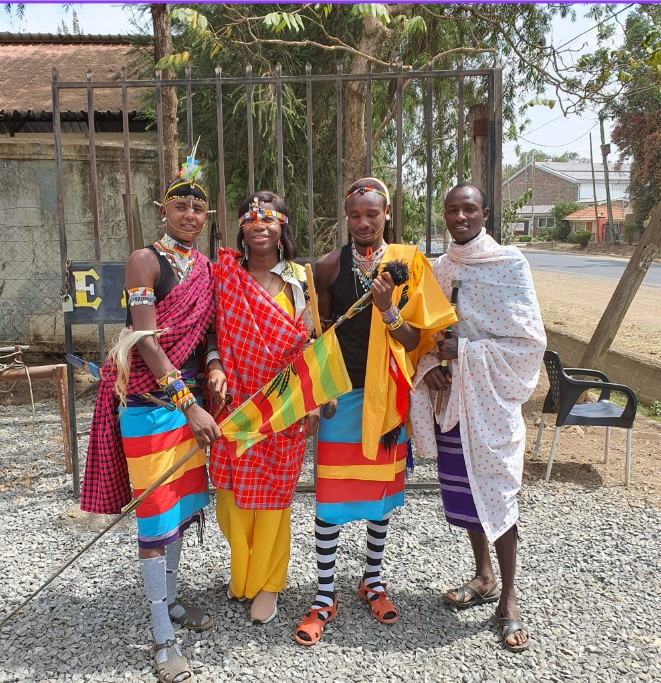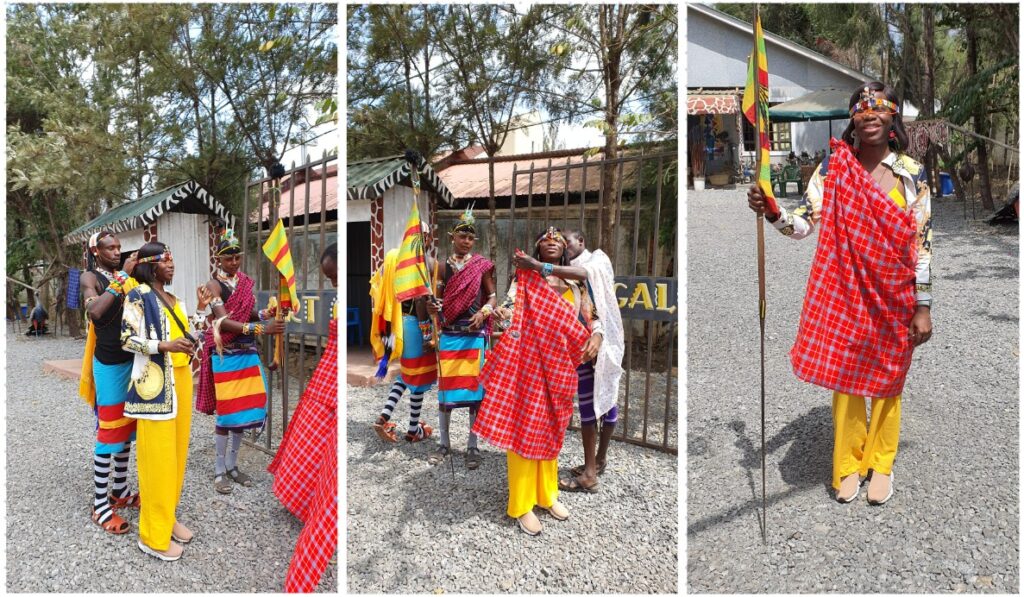Traveling the world and gaining knowledge of other cultures may be a transformational and potent experience. It helps us broaden our perspectives, question our assumptions, and gain a deeper understanding of the world around us. By immersing ourselves in different surroundings, we can develop a greater understanding of the diversity of human experiences and identify the common threads that bind us all together. Moreover, exposure to many cultures helps create a sense of global citizenship by cultivating empathy and compassion for people of diverse origins.
Through my years of travel, I have had the opportunity to broaden my horizons, learn new things, and become more tolerant and culturally aware.
I traveled to Nairobi Kenya, for the first time in my 33 years of life, and it was an immense pleasure to meet and greet the great Maasai people. I was dressed by them in their colorful indigenous and culturally sensitive attire, and it was truly an honor.
As I share a brief history of the Maasai people, I invite you to discover the richness and uniqueness of Maasai heritage in Africa. Explore their cultural practices, traditions, and history in this in-depth article.

Meeting the Maasai people in Nairo, Kenya
Who are the Maasai people?
An ethnic minority in Kenya known as the Maasai is distinguished by its distinctive culture, attire, and rituals. They are one of the most well-known ethnic groups in Africa, and several documentaries, books, and articles have been written about them.
Originating in the Nile Valley, the Maasai people moved southward into Kenya and Tanzania in the fifteenth century. They made their home in the Rift Valley, which is currently a portion of Kenya, and they have remained there ever since. As a pastoralist civilization, the Maasai historically depended on cattle for a living. They were adept herders who moved their herds in search of new grass and water from one grazing location to another.

The Maasai cultural attire with Sylvie Tamanda
What is their traditional Cuisine?
The traditional cuisine of the Maasai is based mostly on the milk, blood, and meat of their cattle. The Maasai are a semi-nomadic ethnic group that inhabited sections of Kenya and Tanzania. Cows are highly prized in Maasai culture and are employed in food production, trading, and as a medium of exchange.
A porridge produced from a combination of cow’s milk and cow’s blood is one of the main diets of the Maasai people. In most cases, the blood is drawn by nicking a cow’s jugular vein with a sharp arrow or knife, collecting the blood in a container, and combining it with fresh milk. Mursik is the name of this porridge, which is typically served with meat and occasionally ugali (a type of cornmeal porridge).
The Maasai eat meat from their sheep, goats, and cattle in addition to mursik. The meat is often only consumed on rare occasions like weddings, ceremonies, and rituals.
Although they are not a foundation of the Maasai diet, fruits and vegetables are occasionally consumed when they are available. The Maasai diet tends to be low in carbohydrates and fibre and rich in protein and fat.
What language do the Maasai people speak?
Maa, also spelt Maasai or Masai, is the name of the Maasai language. Maa is a Nilotic language that is mostly spoken by the Maasai people in Kenya and Tanzania. Several Kenyans from the Samburu and Chamus communities also speak it. Because Maa is a tonal language, a word’s meaning can be altered by its pitch or tone. There are various dialects of the language, including the Samburu, Laikipia, and Loita dialects.
How did colonisation impact the Maasai people?
The Maasai met Europeans during the 19th century, when they were colonising and exploring Africa. The Maasai desired their territory for their own purposes, and the British in particular were interested in it. There were numerous wars and fights as a result of the Maasai’s resistance to British attempts to annex their land.
The British eventually took much of the Maasai’s land despite their resistance. They had to downsize their homes and adopt new ways of life. To supplement their income, a large number of Maasai started working as wage workers or in agriculture. Many tourists are captivated by their culture and traditions, thus some also went into tourism.

Sylvie Tamanda getting dressed by the Maasai people
The Maasai are now dealing with fresh difficulties. They now find it more challenging to maintain their pastoral way of life due to the consequences of climate change. Conflicts with neighbouring communities have also resulted from human settlements encroaching on their property. Despite these difficulties, the Maasai are a tough people who have managed to preserve their culture and traditions.
There have been initiatives to support sustainable development in Maasai villages in recent years. These initiatives strive to uphold Maasai culture and customs while assisting the Maasai in adapting to shifting conditions. The Maasai are hoped to live well into the future with assistance and understanding from the outside world.
Hope you enjoyed reading this. I shall be putting together a Vlog of my entire trip to Nairobi Kenya. Let me know in the comment section, what you make of this article.
1 comment
What language do they speak?